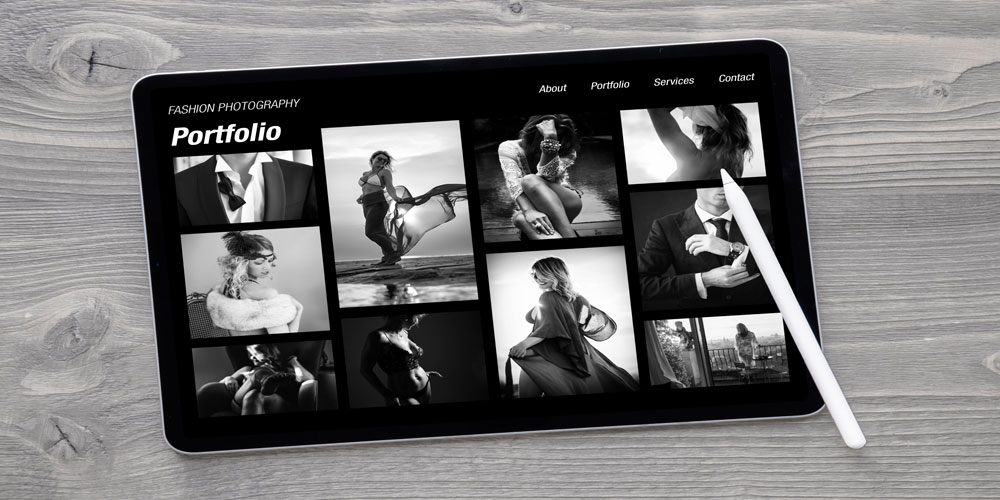The Impact of Photography on a Marketing Project
Photography plays a crucial role in shaping and enhancing the effectiveness of marketing projects. In the digital age, where visual content is a predominant means of communication, the importance of high-quality commercial photography cannot be overstated. From building brand identity to driving consumer engagement, photographs serve as powerful tools that can significantly influence the success of marketing campaigns.
This post explores the multifaceted impact of photography on marketing projects, examining its role in branding, consumer perception, engagement, social media strategy, and overall marketing effectiveness.
1. Building Brand Identity
Photography is a key element in establishing and reinforcing brand identity. A consistent visual style helps create a recognizable and cohesive brand image. This involves the use of specific colors, themes, and imagery that align with the brand’s values and message. High-quality, well-composed photographs can convey a sense of professionalism and trustworthiness, which are essential for building a strong brand reputation.
For instance, lifestyle brands often use vibrant, aspirational images that reflect their target audience’s desired lifestyle. In contrast, a tech company might use sleek, modern images to convey innovation and sophistication. By consistently using photography that aligns with brand identity, companies can create a lasting impression on their audience, making their brand more memorable and easily identifiable.
2. Enhancing Consumer Perception
First impressions are crucial in marketing, and photography often serves as the first point of contact between a brand and its potential customers. High-quality images can significantly enhance consumer perception, making products or services appear more appealing and desirable. On the other hand, poor-quality photographs can have the opposite effect, potentially damaging the brand’s reputation and credibility.
Product photography, in particular, plays a vital role in e-commerce. Clear, detailed images that showcase the product from multiple angles can help consumers make informed purchasing decisions. Additionally, photographs that highlight the product’s features and benefits can further persuade potential buyers. In this way, effective product photography can lead to increased sales and customer satisfaction.
3. Driving Consumer Engagement
Photography is a powerful tool for driving consumer engagement. Visual content is more likely to be shared and liked on social media platforms compared to text-based content. This increased engagement can lead to higher visibility and reach for marketing campaigns. Furthermore, interactive and visually appealing content can capture the audience’s attention more effectively, encouraging them to spend more time engaging with the brand.
For example, user-generated content (UGC) campaigns often leverage photography to encourage customers to share their own images using the brand’s products. This not only boosts engagement but also builds a sense of community and authenticity around the brand. Contests and challenges that involve photography can also drive participation and excitement among the audience.
4. Supporting Social Media Strategy
In the realm of social media, where visual content reigns supreme, photography is indispensable. Platforms like Instagram, Pinterest, and Facebook are heavily reliant on images to attract and retain users’ attention. High-quality, eye-catching photographs can significantly enhance a brand’s social media presence, helping to attract followers and foster engagement.
A well-executed social media strategy often includes a mix of professionally shot images and authentic, candid photos that resonate with the audience. This balance helps maintain a polished brand image while also showcasing the human side of the brand. Additionally, leveraging trends such as Instagram Stories and Reels can further boost visibility and engagement, with photography playing a central role in these formats.
5. Increasing Conversion Rates
Photography can directly impact conversion rates by influencing consumer behavior and decision-making processes. Effective use of photographs in marketing materials, such as websites, emails, and advertisements, can guide consumers through the sales funnel and encourage them to take desired actions, such as making a purchase or signing up for a newsletter.
For instance, hero images on landing pages can create an immediate emotional connection with visitors, compelling them to explore further. Detailed product images with zoom functionality can provide reassurance and reduce hesitation, leading to higher conversion rates. In email marketing, personalized and visually appealing images can increase click-through rates and drive traffic to the website.
6. Storytelling and Emotional Connection
One of the most powerful aspects of photography is its ability to tell stories and evoke emotions. Storytelling through visual content can create a deeper connection with the audience, making the brand more relatable and memorable. Photographs that capture authentic moments, emotions, and experiences can resonate with consumers on a personal level, fostering loyalty and trust.
For example, a travel company might use stunning landscape photos to tell stories of adventure and exploration, inspiring potential customers to book their next trip. A non-profit organization might use emotive photographs to highlight their mission and impact, encouraging donations and support. By weaving narratives through photography, brands can create compelling and meaningful marketing campaigns.
7. Enhancing Content Marketing
Content marketing relies heavily on visuals to complement and enhance written content. Blog posts, articles, and infographics that include high-quality photographs are more likely to capture readers’ attention and keep them engaged. Visual content can also break up large blocks of text, making the content more digestible and appealing.
Incorporating photography into content marketing can also improve SEO (Search Engine Optimization) efforts. Images with proper alt text and descriptive captions can help improve search engine rankings, driving more organic traffic to the website. Additionally, visually appealing content is more likely to be shared on social media, further amplifying its reach and impact.
8. Differentiating from Competitors
In a crowded marketplace, differentiation is key to standing out and capturing the audience’s attention. Good commercial photography can play a crucial role in setting a brand apart from its competitors. Unique and creative imagery can make a brand more memorable and distinguish it from others in the same industry.
For example, a restaurant might use professional food photography to showcase their dishes in an appetizing and creative way, differentiating themselves from competitors with mediocre images. A fashion brand might use avant-garde photography to position themselves as trendsetters and innovators. By investing in distinctive and high-quality photography, brands can create a competitive edge and attract more customers.
9. Adapting to Changing Trends
The world of photography, like marketing, is constantly evolving. Staying abreast of the latest trends in photography can help brands remain relevant and appealing to their audience. For example, the rise of mobile photography and the increasing popularity of candid, unfiltered images reflect a shift towards authenticity and relatability.
Brands that adapt to these trends can better connect with their audience and stay ahead of the competition. This might involve incorporating user-generated content, embracing minimalistic and clean aesthetics, or experimenting with new formats such as 360-degree photos and virtual reality experiences. By keeping up with trends, brands can ensure their photography remains fresh and engaging.
10. Improving ROI (Return on Investment)
Investing in high-quality photography can yield significant returns on investment. Professional images can enhance the overall effectiveness of marketing campaigns, leading to increased engagement, higher conversion rates, and ultimately, greater revenue. Additionally, well-crafted photographs can be repurposed across various marketing channels, maximizing their value and impact.
For example, a single photoshoot can provide a library of images that can be used on the website, social media, email campaigns, and print materials. This not only ensures consistency in branding but also optimizes the cost-effectiveness of the photography investment. By leveraging high-quality photography, brands can achieve better results and improve their marketing ROI.
Photography & Your Marketing Project
Photography is a powerful and versatile tool that can significantly impact the success of marketing projects. From building brand identity and enhancing consumer perception to driving engagement and increasing conversion rates, high-quality images play a crucial role in every aspect of marketing.
By investing in professional photography and staying attuned to the latest trends, brands can create compelling and effective marketing campaigns that resonate with their audience and deliver tangible results. In the digital age, where visual content is paramount, the importance of photography in marketing cannot be overstated.



